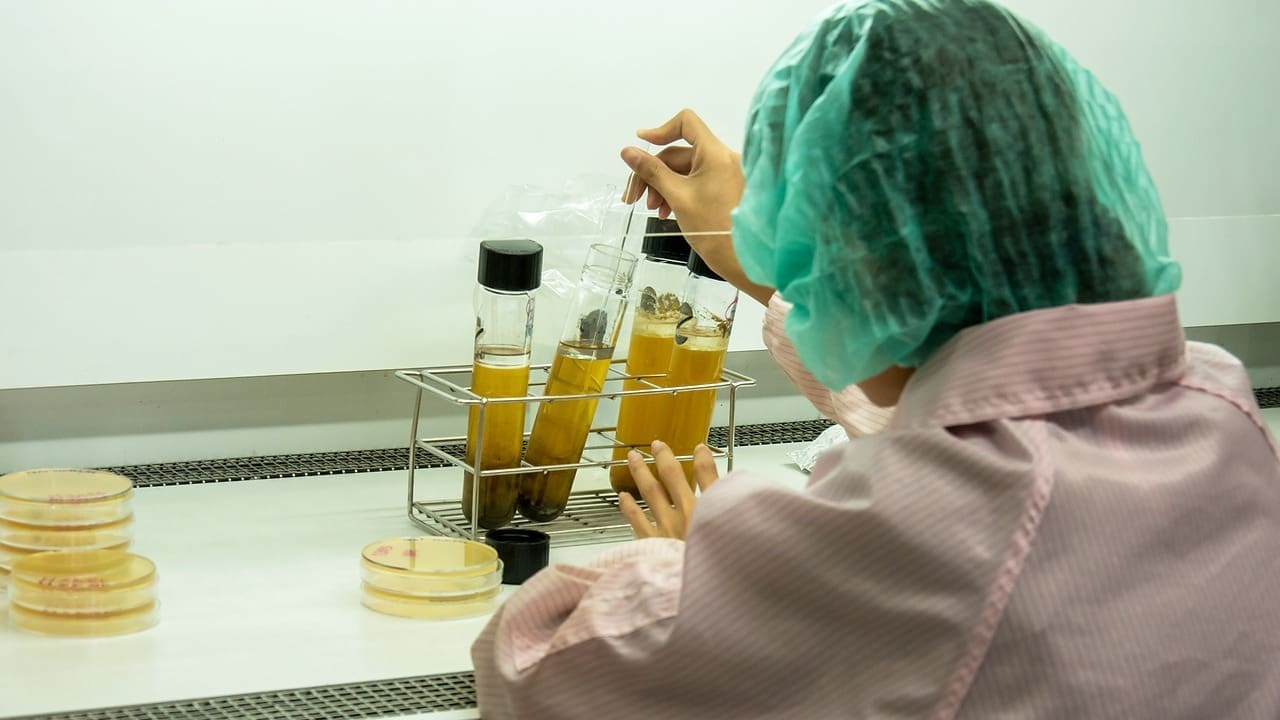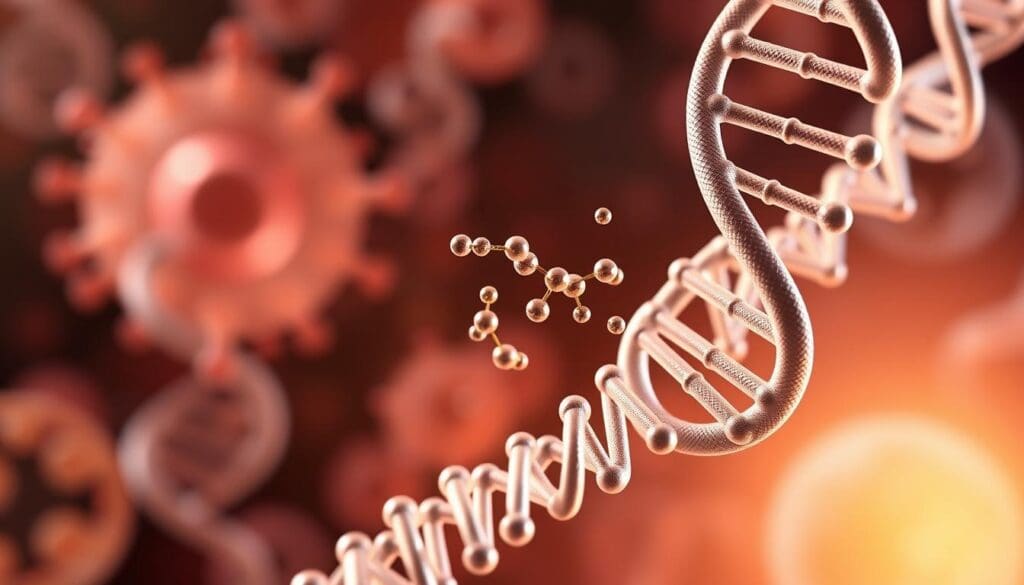Last Updated on November 27, 2025 by Bilal Hasdemir

At Liv Hospital, we understand how important alkylating agents are in fighting cancer. These drugs add alkyl groups to DNA. This stops cancer cells from growing.
We lead in cancer care by using alkylating chemotherapy. It targets cancers like lymphomas and leukemias. Our team knows how to use these drugs best, helping our patients fully.
We are dedicated to top-notch care and research. We focus on dna alkylating agents to improve cancer treatment.
Key Takeaways
- Alkylating agents are key in cancer treatment, stopping DNA and cancer cell growth.
- These drugs work all through the cell cycle, making them a strong tool against cancer.
- Liv Hospital follows the latest research and care plans for alkylating agents.
- Alkylating chemotherapy fights many cancers, including lymphomas and leukemias.
- Our team offers full support to patients using alkylating agents.
The Science Behind Alkylating Agents in Cancer Treatment
The story of how alkylating agents went from being used in chemical warfare to treating cancer is amazing. It shows how these compounds changed from harmful weapons to lifesaving treatments.
The Historical Development of Alkylating Agents
The start of alkylating agents’ development is tied to their use in chemical warfare. The use of sulfur mustard in World War I showed its harm to human health, mainly to bone marrow and lymphoid tissues.
From Warfare to Medicine: Origin Story
Experts say that sulfur mustard’s harm to fast-growing cells led to its testing as a cancer treatment. This was the start of a new era in fighting cancer. The 1940s saw the creation of nitrogen mustards, a key step in cancer treatment.
The move from sulfur mustard to nitrogen mustards was more than just a chemical change. It was a big step towards treating cancer more effectively. This shows how research in one area can lead to big discoveries in another.
“The discovery of nitrogen mustards as therapeutic agents represented a major milestone in the history of cancer chemotherapy, paving the way for modern alkylating agents.”
Today, alkylating agents continue to shape cancer treatment. Their history shows the power of medical innovation and the need to understand the science behind cancer treatments.
Fact 1: Mechanism of Action – How DNA Alkylation Disrupts Cancer Cells
Alkylating agents work by adding an alkyl group to DNA. This is key to their ability to fight cancer. These drugs attach to DNA, causing it to cross-link and break. This stops DNA from making copies and reading genes.
We look into how DNA alkylation affects cancer cells. This process involves complex chemical reactions. It leads to the death of cancer cells.
The Process of DNA Alkylation Explained
DNA alkylation happens when alkylating agents bond with DNA. This bond changes DNA’s structure and function. It stops cancer cells from making copies of themselves.
Chemical Reactions at the Molecular Level
The chemistry behind DNA alkylation is complex. Alkylating agents can attach to DNA at different spots. This creates DNA adducts, which can link DNA strands together.
Alkylating agents are good at causing DNA damage. This damage stops cancer cells from growing. Below is a table that shows how DNA alkylation affects cancer cells.
| Mechanism | Effect on DNA | Impact on Cancer Cells |
|---|---|---|
| DNA Alkylation | Cross-linking and strand breaks | Inhibition of DNA replication and transcription |
| Formation of DNA adducts | Disruption of DNA structure and function | Cell death due to DNA damage |
Understanding DNA alkylation helps us see how alkylating agents fight cancer. They are a key treatment for many cancers.
Fact 2: Major Classes of Alkylating Agents in Clinical Use
Alkylating agents are key in cancer treatment. Knowing their types is vital. They are grouped by their structure and how they work, affecting their use in medicine.
Nitrogen Mustards: Cyclophosphamide, Chlorambucil, and Melphalan
Nitrogen mustards were early in chemotherapy. Cyclophosphamide is a top choice for many cancers, like lymphomas and leukemias. Chlorambucil and Melphalan also help, mainly in lymphomas and multiple myeloma.
Nitrosoureas and Alkyl Sulfonates
Nitrosoureas, like Carmustine and Lomustine, can reach brain tumors. Alkyl sulfonates, like Busulfan, are used before stem cell transplants.
Platinum-Based Compounds: Related Alkylating-Like Agents
Platinum drugs, like Cisplatin, Carboplatin, and Oxaliplatin, don’t fit the alkylating category but act like them. They’re used for many solid tumors, like ovarian and colorectal cancers.
Similarities and Differences in Mechanism
All these agents harm DNA to stop cancer cells from growing. But, each works differently, affecting how they’re used and their side effects. Knowing these differences helps doctors choose the best treatments.
Fact 3: The Advantage of Alkylating Therapy’s Phase-Nonspecific Nature
Alkylating therapy is special because it works on cancer cells at any stage. This is called phase-nonspecific. It helps treat many types of cancer.
Understanding Cell Cycle Specificity in Cancer Treatment
Cancer cells have different stages in their life cycle. Some treatments target these stages. But alkylating agents can damage DNA at any time. This makes them good against fast and slow-growing tumors.
Clinical Benefits of Phase-Nonspecific Action
Alkylating agents have many benefits. They can hit tumors that grow slowly, like some solid tumors. They also work well with other treatments that target specific stages of the cell cycle.
Targeting Slow-Growing Tumors
Slow-growing tumors are hard to treat because many drugs work better on fast-growing cells. But alkylating agents can reach these slow-growing tumors. This makes alkylating therapy a key part of cancer treatment.
In summary, alkylating agents’ ability to target any tumor stage is a big plus in cancer treatment. They can damage DNA at any time. This makes them a key part of many chemotherapy plans.
Fact 4: Cancer Types Most Responsive to Alkylating Chemotherapy
Alkylating agents are effective against many cancers, like hematological malignancies and some solid tumors. They play a big role in cancer treatment. Their use in different cancers is well-known.
Hematological Malignancies: Lymphomas and Leukemias
Lymphomas and leukemias respond well to alkylating chemotherapy. Lymphomas like Hodgkin’s and non-Hodgkin lymphoma see good results. Also, leukemias like CLL and CML often get treated with these agents.
Treatment Protocols and Success Rates
For lymphomas and leukemias, treatment often includes alkylating agents. For example, the CHOP regimen is used for non-Hodgkin lymphoma, with cyclophosphamide being a key part. Success rates depend on the cancer type, stage, and patient health. But, alkylating agents have greatly helped many patients.
Solid Tumors Treated with Alkylating Agents
Alkylating agents are also used for some solid tumors. For instance, temozolomide is used in brain tumors like glioblastoma. Ovarian and lung cancers may also get treated with these agents, often with other drugs.
Rare Cancers and Specialized Applications
Alkylating agents are used for rare cancers and special treatments. For aggressive or relapsed cancers, high-dose chemotherapy with these agents and stem cell transplantation is used. Their wide use in cancer treatment shows their key role in oncology.
Fact 5: Understanding the Toxicity Profile of Alkylating Agents
It’s key to know how alkylating agents work to get the most from them. These agents are a big part of fighting cancer. But, they can also cause harm that affects how well a patient does.
Short-Term Side Effects: Bone Marrow Suppression and Gastrointestinal Issues
Bone marrow suppression is a big problem with alkylating agents. It means the body makes fewer blood cells. This can lead to infections, anemia, and bleeding. We watch blood counts closely to avoid these issues.
Management Strategies for Acute Toxicities
Handling acute side effects needs a team effort. We use G-CSF to help make more white blood cells. Antiemetic drugs also help with nausea and vomiting.
Long-Term Risks: Secondary Malignancies and Fertility Concerns
Long-term, alkylating agents can cause other cancers. They can also hurt fertility, making it hard to have children. This is true for both men and women.
Risk-Benefit Assessment in Different Patient Populations
Every patient is different, so we weigh risks and benefits carefully. We look at age, health, cancer type, and long-term effects. This helps us find the best treatment plan.
In short, knowing how alkylating agents work is vital for safe use in cancer treatment. By understanding their risks, we can make treatment better and safer for patients.
Fact 6: Optimizing Treatment Through Combination Therapies
Alkylating agents are used in combination therapies to fight cancer. This approach combines these agents with other drugs. It makes treatment more effective and helps overcome resistance.
Synergistic Drug Combinations in Modern Protocols
Today, combination therapies are key in cancer treatment. They include alkylating agents. These combos attack cancer cells in different ways, making treatment more powerful.
Key Combination Regimens by Cancer Type
- Hematological malignancies: CHOP (cyclophosphamide, doxorubicin, vincristine, and prednisone) is a common mix.
- Solid tumors: Alkylating agents are paired with platinum drugs and others for treatment.
Rationale Behind Multi-Drug Approaches
Multi-drug approaches are used to beat the limits of single drugs. Mixing drugs with different actions helps avoid resistance. It also boosts treatment success.
Overcoming Single-Agent Limitations
- Targeting more pathways to lower resistance risk.
- Boosting treatment power with synergistic effects.
- Enhancing patient results by shrinking tumors.
Understanding combination therapies helps doctors create better treatment plans. This improves care for patients.
Fact 7: Resistance Mechanisms to Alkylating Chemotherapy Agents
Alkylating agent resistance is a complex issue. It involves many molecular and cellular processes. We look at how cancer cells resist these important chemotherapy agents. We also talk about ways to beat this resistance.
DNA Repair Pathways and Treatment Resistance
One main way cancer cells resist alkylating agents is by fixing DNA better. They turn on different DNA repair systems to fight off the damage from these drugs.
Molecular Basis of Repair Mechanisms
The repair mechanisms are based on complex enzymes. For example, the O-methylguanine-DNA methyltransferase (MGMT) enzyme is key in fixing DNA damage from alkylating agents. When cancer cells have a lot of MGMT, they can resist these drugs.
Overcoming Resistance: Current Strategies and Approaches
To fight resistance, scientists are exploring new ways. One idea is to use drugs that work with alkylating agents. These drugs block the DNA repair systems.
Predictive Biomarkers for Treatment Response
Finding biomarkers to predict treatment response is key. Biomarkers like MGMT promoter methylation status help tell who will do well with certain alkylating agents.
| Biomarker | Alkylating Agent | Predictive Value |
|---|---|---|
| MGMT promoter methylation | Temozolomide | High response in methylated tumors |
| BRCA1/2 mutations | Cyclophosphamide | Increased sensitivity in mutated tumors |
By understanding resistance and using biomarkers, we can make alkylating agent therapy better. This will help patients get better results.
The Future of Alkylating Antineoplastic Agents: Research and Innovations
The world of alkylating agent research is changing fast. This is thanks to new ways to target treatments and personalized medicine. We’re finding new ways to make these treatments work better and be safer.
Targeted Delivery Systems for Enhanced Efficacy
Targeted delivery systems are a big step forward in treating cancer. By putting alkylating agents in nanoparticles or attaching them to antibodies, we can hit cancer cells harder. This makes treatments more effective and cuts down on side effects.
Personalized Medicine Approaches in Alkylator Therapy
Personalized medicine is changing how we fight cancer, including with alkylating agents. By looking at a patient’s genes, we can figure out how they’ll react to treatment. This helps us tailor treatments to each person.
Genetic Profiling and Treatment Selection
Genetic profiling lets us find out how a patient’s genes might affect their response to alkylating agents. This info helps us choose the right treatment and the right dose.
| Genetic Marker | Alkylating Agent Response | Clinical Implication |
|---|---|---|
| MGMT promoter methylation | Improved response to temozolomide | Consider temozolomide in treatment protocol |
| BRCA1/2 mutations | Increased sensitivity to platinum-based compounds | Platinum-based therapy may be preferred |
| DNA repair gene mutations | Variable response to alkylating agents | Further genetic analysis recommended |
As we keep pushing the boundaries of research, we expect to see even better cancer treatments. These new approaches will help make treatments more effective and tailored to each patient. This will lead to better results for everyone.
Clinical Implementation of Alkylating Therapy in Modern Oncology
In modern oncology, using alkylating therapy is complex. It requires careful thought about treatment plans and watching patients closely. Making sure alkylating agents work well is key to their success.
Treatment Protocols and Best Practices
Creating treatment plans for alkylating therapy is a team effort. It considers the cancer type, stage, patient health, and past treatments. Choosing the right dose is essential for the best results.
Dosing Strategies and Administration Methods
Dosing for alkylating agents depends on the drug, patient health, and treatment goals. We look at the patient’s overall health, kidney function, and drug interactions to set the dose. How the drug is given, like by mouth or through a vein, is also important.
Patient Monitoring and Supportive Care
Keeping an eye on patients during alkylating therapy is vital. We check blood counts, liver, and kidney function regularly. Supportive care, like anti-nausea meds and growth factors, helps patients feel better.
Managing Treatment Through the Patient Journey
We work with patients to handle side effects and adjust treatment as needed. Our goal is to give care that supports both body and mind.
Conclusion: The Enduring Role of Alkylating Agents in Cancer Care
Alkylating agents are key in fighting cancer. They work well against many types of cancer. We’ve looked at how they work, their types, and how they’re used in treatment.
These agents are vital in cancer treatment. They help fight cancers like blood cancers and solid tumors. As science moves forward, they will keep playing a big role in fighting cancer.
Doctors can make treatment better by knowing the good and bad of alkylating agents. This helps patients live better and longer. The future of these treatments includes making them more precise and safe for each patient.
FAQ
What are alkylating agents and how do they work in cancer treatment?
Alkylating agents are a type of chemotherapy drug. They work by adding an alkyl group to DNA. This causes DNA to break and stop working, leading to cell death. We use them to treat many cancers, like lymphomas and solid tumors.
What are some examples of alkylating agents used in chemotherapy?
Some examples include cyclophosphamide and chlorambucil. These drugs are used to treat different cancers. They are often used together in treatment plans.
What is the advantage of alkylating agents being phase-nonspecific?
Being phase-nonspecific means they can affect cells at any stage. This makes them good for treating certain solid tumors.
What types of cancers are most responsive to alkylating chemotherapy?
They work well on lymphomas, leukemias, and some solid tumors. Their effectiveness is backed by research. They are often used in combination treatments.
What are the common side effects of alkylating agents?
Side effects include bone marrow suppression and gastrointestinal issues. They can also cause secondary cancers and affect fertility. We work to minimize these risks.
How do cancer cells develop resistance to alkylating agents?
Cancer cells can repair DNA damage caused by these agents. Understanding this helps us find ways to overcome resistance and improve treatment.
What is the role of combination therapies in optimizing the use of alkylating agents?
Using alkylating agents with other drugs can be more effective. It helps avoid resistance and improves patient outcomes. We combine them to get the best results.
What are the future directions in the research and development of alkylating antineoplastic agents?
New strategies like targeted delivery and personalized medicine are promising. They aim to improve treatment and reduce side effects. We’re always looking for ways to make treatments better.
References
- WebMD: https://www.webmd.com/breast-cancer/breast-cancer-alkylating-agents
- National Center for Biotechnology Information (NCBI) / Books: https://www.ncbi.nlm.nih.gov/books/NBK547849/
- Osmosis: https://www.osmosis.org/learn/Alkylating_agents:_Nursing_Pharmacology
- Wikipedia: https://en.wikipedia.org/wiki/Alkylating_antineoplastic_agent








